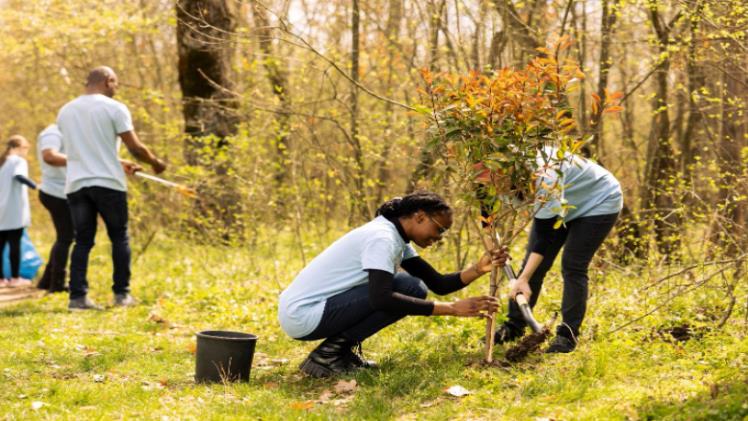Effective Tree Care for Disease Management and Tree Health

Serving as a background for our homes and towns, healthy trees are living resources that offer natural beauty, shade, and oxygen. However, disease can subtly harm even the most robust-looking tree. Infections spread swiftly if treatment is not received, weakening branches and occasionally resulting in total tree loss.
To prevent and manage disease and save trees as well as the landscapes they support, proper tree care is important. This guide explores how homeowners and communities can control disease and take care of trees.
Why Disease Management Matters in Tree Care
Tree diseases endanger stability and safety in addition to visual appeal. Trees are more likely to lose branches when they have fungal diseases, including root rot and canker diseases, which compromise the structural health.
In addition to safety, diseases spread, endangering nearby trees and decreasing diversity. While maintaining the ecological and financial worth of trees, early detection and appropriate maintenance lessen the need for harsh actions like removal.
Tree Diseases and Warning Signs
The first step of tree care is recognising and managing symptoms effectively. Among the most common diseases are:
- Powdery Mildew:
A white, dusty layer on leaves that inhibits photosynthesis and stunts growth.
- Root Rot:
This condition, which is frequently brought on by excessive watering or inadequate soil drainage, results in yellowing of trees and stunted growth.
- Dutch elm:
It is a fungal infection that kills and wilts elm trees and is transmitted through insects.
- Anthracnose:
It causes branch dying, early leaf drop, and brown or black leaf patches.
- Cankers:
Dead, sunken bark areas that may release sap, weakening branches, and increasing a tree’s sensitivity to breaking.
Regularly checking trees for changes in their bark, leaves, or general structure helps save minor problems from becoming more serious ones.
Proactive Tree Care Practices
Soil and Root Health
Trees with healthy soil are healthy. Roots require balanced nutrients and proper drainage to resist diseases. Additionally, mulching keeps moisture in without causing waterlogging and helps control temperature.
Enough Watering
Trees can be stressed by overwatering or underwatering. Tree flexibility is maintained with a regular watering schedule that takes soil type and climate into consideration. Stronger root systems are promoted by deep irrigation as opposed to frequent shallow watering.
Integrated Pest Management System
In many cases, insects that carry pathogens worsen diseases. IPM uses biological insects, restricted chemical treatments, and monitoring to effectively control pests.
When to Call for Professional Help
Most property owners can handle basic maintenance, but certified surgeons are needed for disease outbreaks. Experts can securely remove dangerous branches or trees, apply cutting-edge treatments, and conduct diagnostic tests.
Additionally, tree care experts offer a preventive strategy by advising on species selection, spacing, and nutrients for the soil that lower the chance of disease long before symptoms show up.
Final Thoughts
Disease is a constant threat to trees, but it doesn’t necessarily mean that they will die. Trees can be kept healthy and safe for many years with good tree care that is based on prevention and immediate action. Every action, from soil health to trimming when necessary, benefits the tree and overall environment as well.
Healthy trees are an investment in the future, not merely a decorative feature. They will continue to provide shade, safety, and inspiration for future generations if illness is managed with knowledge.



